Even though only about 20 cruise ships have sunk in the last hundred years, having lifeboats on board is an important safety measure every ship should have.
Lifeboats are designed to evacuate passengers and crew if something happens to the vessel on which they’re sailing. This gives them the chance to make it back to shore safely. In addition, lifeboats can also be used as rescue tools for passengers who may have gone overboard.
In this article, we will discuss common cruise ship lifeboats FAQs (frequently asked questions), including the different types of lifeboats, how they are used, and the regulations associated with them. Hopefully you will never need one, but it’s better to be informed and prepared.

Cruise Ship Lifeboats FAQs: Regulations
What are the rules for lifeboats?
All cruise ships have to follow regulations by SOLAS, which is an acronym for Safety of Life at Sea. These state that every cruise ship must have lifeboats on both sides of the ship. Do cruise ships have enough lifeboats for every passenger? Not usually. At a minimum, 37.5% of the vessel’s passenger capacity must be accommodated on each side.
This means that at least 75% of the ship’s passengers will be able to disembark from the ship using the lifeboats in case of an emergency. The other 25%, plus crew, can use inflatable life rafts. However, cruise ships often will have more lifeboats than the minimum required on board, just in case.
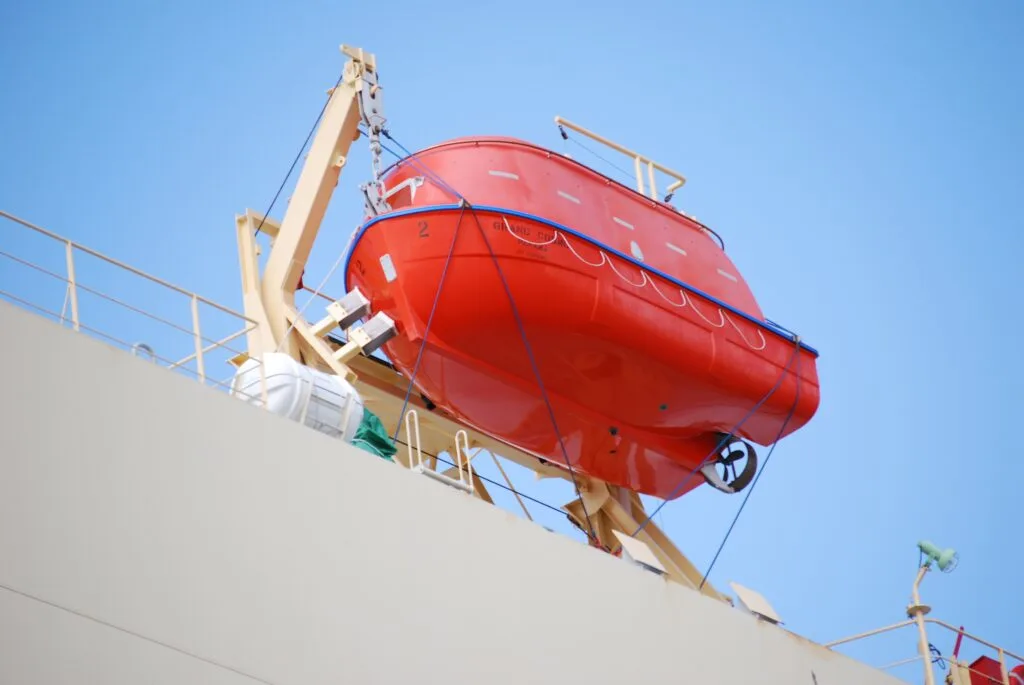
Cruise Ship Lifeboats FAQs: Types of Lifeboats
In general, there are five types of lifeboats that cruise ships and other vessels use: fireproof lifeboats, hyperbaric lifeboats, free-fall lifeboats, closed lifeboats, and open lifeboats. Let’s take a look at each one to get a better understanding of how they are used.
Fireproof Lifeboats
These lifeboats are typically used in case of an oil spill and can protect against flames. They are usually the least common type of lifeboat on cruise ships, as it’s not often that passenger vessels will be going through flames or oil spills.
Hyperbaric Lifeboats
Hyperbaric lifeboats are used in case divers have an emergency during a deep dive. For example, if a diver gets stuck in a crevice and can’t get back to the surface, they can be rescued using this type of lifeboat. The hyperbaric lifeboat has 72-hour life support so the divers can make it back to the surface, where they can then decompress safely.
Free-Fall Lifeboats
Free-fall lifeboats are the fastest way to disembark from a cruise ship in case of an emergency. They are designed to be released from the ship’s deck and quickly drop into the ocean with the passengers on board.
Closed Lifeboats
In case cruise ships encounter a hurricane or bad storm, closed lifeboats are used to protect passengers from strong winds, seawater, and rain. The boats are able to stay upright without being capsized in bad weather.
Open Lifeboats
Open lifeboats have no roof and are the least safe type of lifeboat on cruise ships. In case of bad weather or currents, there is no protection against the elements. However, they can be used in case the cruise ship suffers mechanical issues or needs to be evacuated quickly.
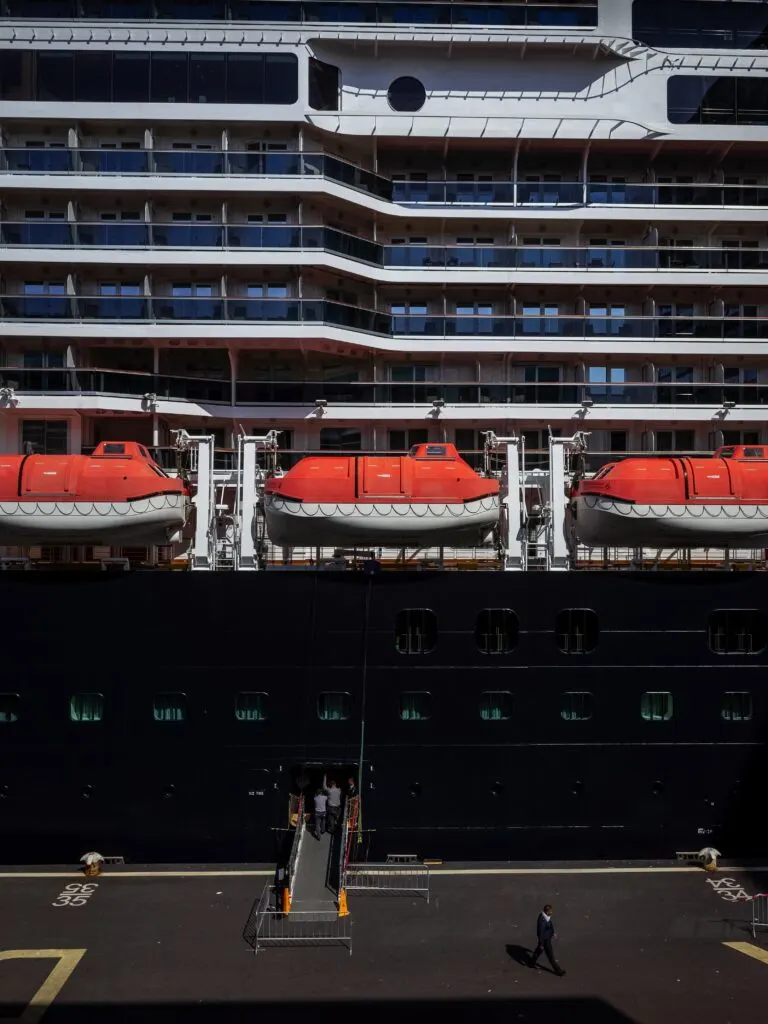
How Many People Does a Cruise Ship Lifeboat Hold?
Depending on the size of the cruise ship, lifeboats can vary in maximum capacity. The most common cruise ship lifeboats capacity is for 150 people. However, mega ships that hold thousands of passengers have lifeboats that can accommodate around 370 passengers.
What Is the Most Common Lifeboat on Cruise Ships?
Closed lifeboats are the most common on cruise ships. If you think about it, if you are taking a cruise through the Caribbean, bad storms are common. If evacuation is needed, it’s vital to keep the passengers as safe as possible. Since closed lifeboats are fully enclosed, they protect against rain, wind, and seawater.
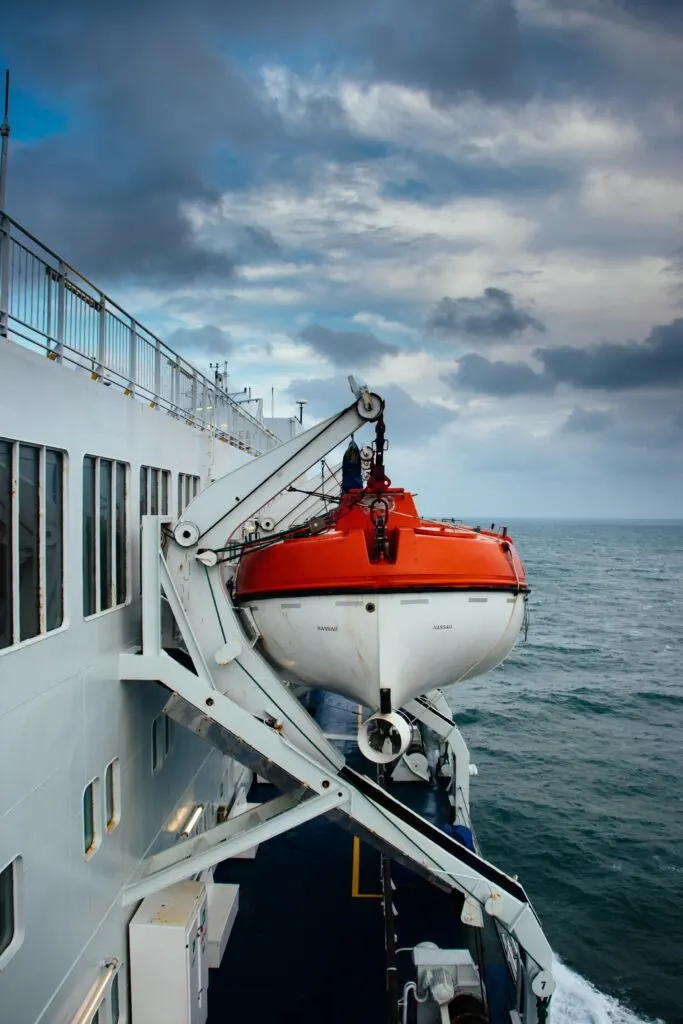
What Are the Requirements for Lifeboats Construction?
Lifeboats need to be constructed in a specific way to pass regulations. In addition, the construction is important as it needs to ensure it can protect passengers from elements, including fire.
Therefore, lifeboats need to be made of flame-retardant and non-combustible materials. In addition, lifeboats need to be stable on the water when fully loaded with passengers and supplies. They also need to be strong enough to be launched when the ship is going at a speed of 5 knots.
Lastly, lifeboats need to be able to support a weight of 220 lbs per person and be no less than 7.3 meters long.
Why Are Lifeboats Important on Cruise Ships?
No matter if you are on a river cruise or ocean cruise, lifeboats are vital for passenger safety. Many people know what happened to the Titanic and how there weren’t enough lifeboats to accommodate everyone on the ship. There were other reasons for the number of casualties, but not having enough lifeboats was one of them.
It’s important to remember that no matter the type of cruise you are taking, it’s possible for something unexpected to happen. Whether it’s a mechanical issue or a bad storm, having lifeboats on board will give passengers and crew a chance of making it back to shore safely.
Even though the Titanic was a tragedy, it has served as a big lesson for the cruise industry. Since then, cruise companies have continued to improve safety measures, including having enough lifeboats on board for any type of emergency.
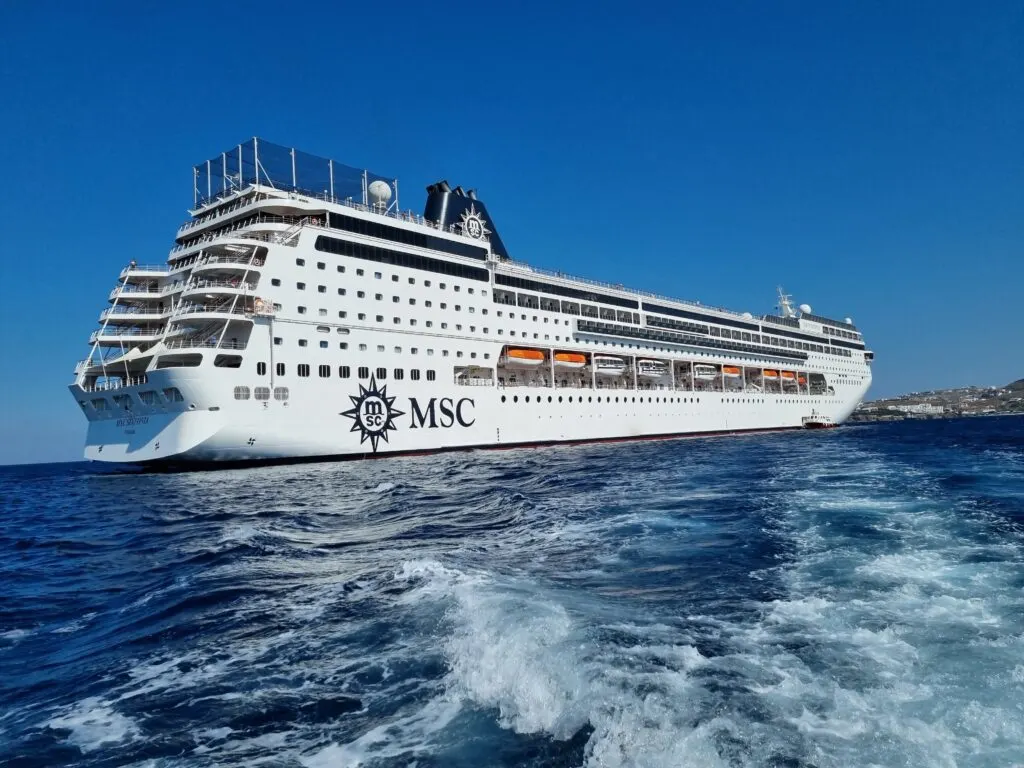
What Are the Inside of Lifeboats Like?
Lifeboats are designed to fit as many people as possible to ensure they can get to safety. They typically have an oval shape, with the center of the lifeboat open for structural elements. Around the perimeter of the lifeboat are seats, with safety equipment underneath.
In general, the safety equipment includes the necessary supplies to keep you alive at sea. For example, there will life jackets, water, food, flares, first aid kits, and other items.
It’s important to note that the inside of a lifeboat is plain and has no luxuries. Cruise ships are designed for comfort, but lifeboats are created with one goal in mind: saving lives. Do cruise ship lifeboats have bathrooms? While it’s possible to have a small water closet on board larger lifeboats, most cruise ship lifeboats do not have bathrooms.
How do cruise ship lifeboats work? At the front of the lifeboat is where the captain will be with a command console. Depending on the type of lifeboat, they are usually powered by a diesel engine.
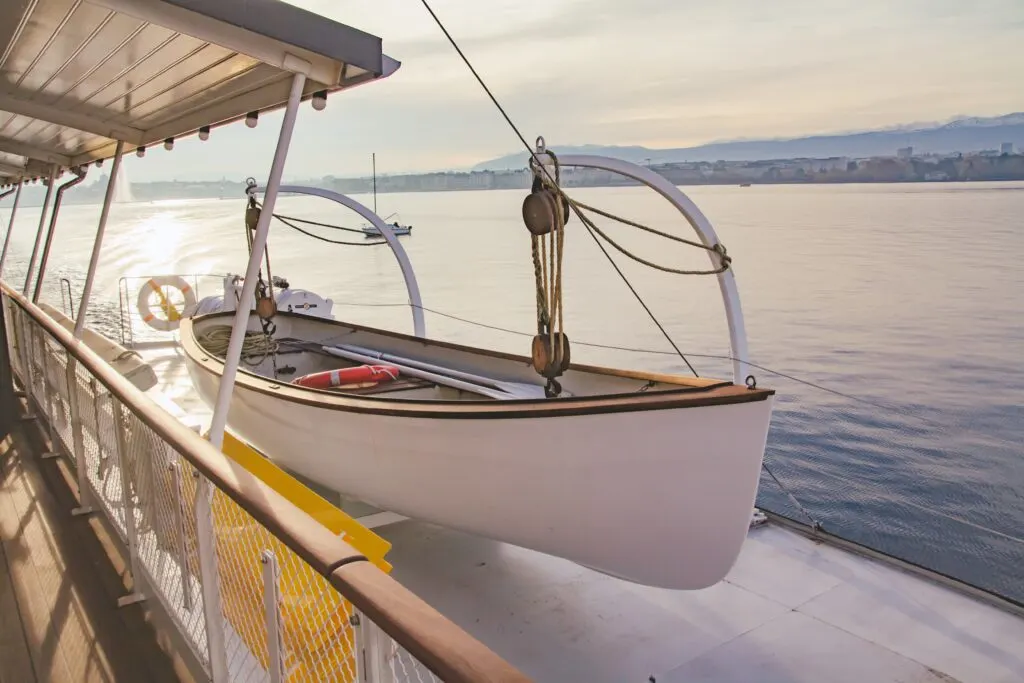
How Are Lifeboats Lowered From Cruise Ships?
If there is an emergency evacuation, passengers will be sent to the sides of the ship where the lifeboats are located. From there, passengers will get on a lifeboat until it reaches max capacity. Then the lifeboat will swing out and be lowered onto the water.
Cruise Ship Lifeboats FAQs: Conclusion
Hopefully, these cruise ship lifeboats FAQs have answered all your questions. Although the chances of a cruise ship sinking are low, it’s important to be aware of safety protocol in case you ever find yourself on board a vessel that requires evacuation. Remember that cruise ships’ safety protocols and lifeboats have come a long way since the Titanic tragedy, so don’t worry and enjoy your cruise!
Planning a cruise vacation? Consider talking to one of our cruise travel experts. We also have plenty of articles to help you plan your trip: Virgin Voyages Cruise Review, Virgin vs. Celebrity, Virgin Voyages vs. Carnival, Rhine vs. Danube River Cruise, Viking vs. Oceania, Royal Caribbean vs. Celebrity, Norwegian vs. Carnival, Royal Caribbean vs. MSC Cruises, Royal Caribbean vs. Princess Cruises, Why Are Disney Cruises So Expensive?, Norwegian vs. Princess, Carnival Cruise vs. Royal Caribbean, and 10 Best Honeymoon Cruises and Cruise Lines.
